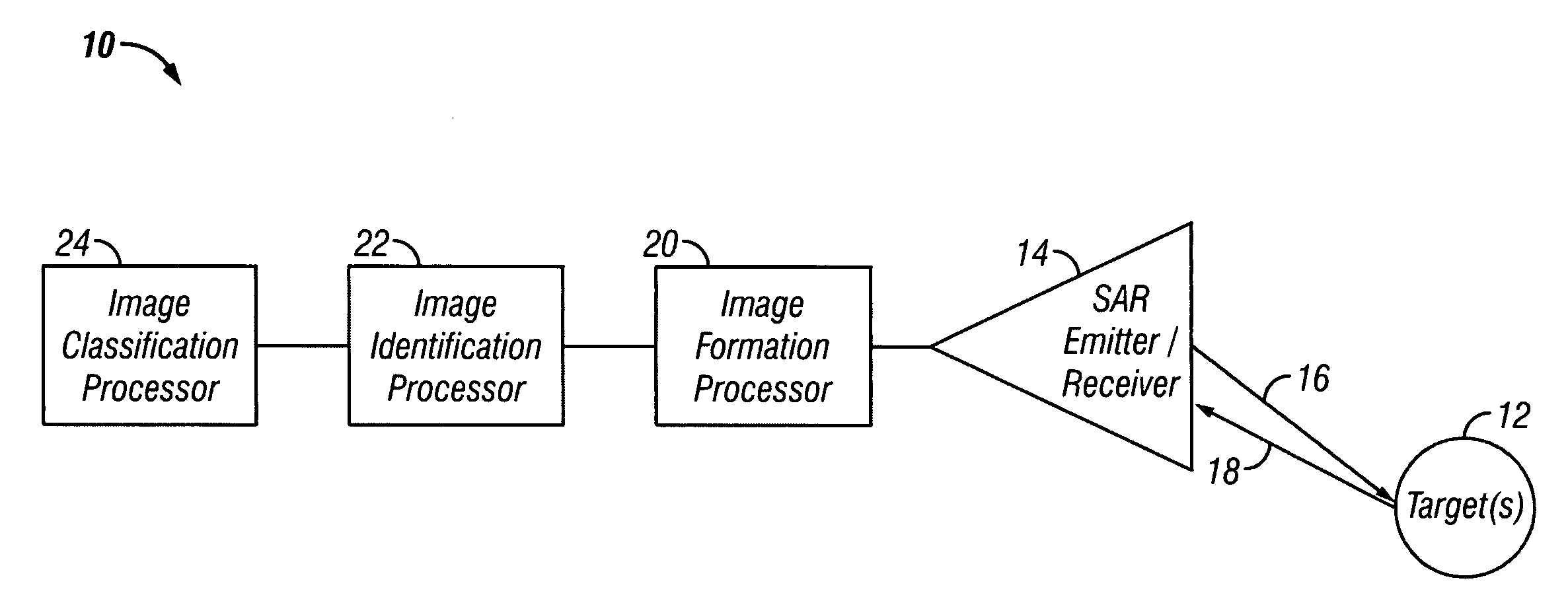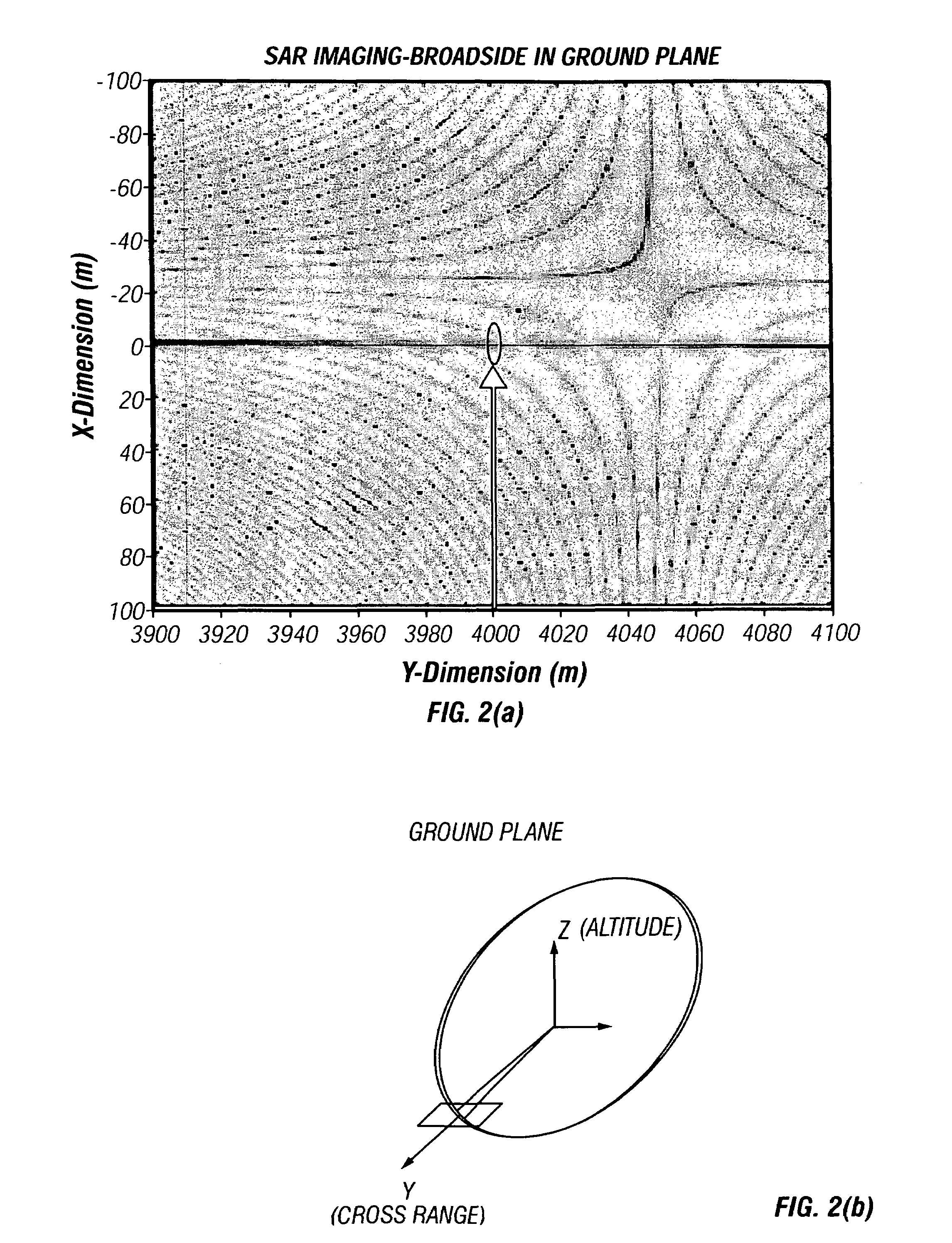Creating and identifying synthetic aperture radar images having tilt angle diversity
a technology of synthetic aperture radar and image, applied in scene recognition, instruments, measurement devices, etc., can solve the problems of affecting the correctness of target classification, and affecting the accuracy of target classification
- Summary
- Abstract
- Description
- Claims
- Application Information
AI Technical Summary
Benefits of technology
Problems solved by technology
Method used
Image
Examples
Embodiment Construction
[0026]The present invention is of a method and apparatus for employing synthetic aperture radar (SAR) images to automatically classify a target by emitting and collecting SAR signals at a plurality of squint angles, forming a plurality of SAR images of the target from the collected signals, the plurality of SAR images substantially having tilt angle diversity, automatically classifying the target from each of the plurality of SAR images, and generating a most probable target classification from the classifications of the plurality of SAR images.
[0027]By intentional vehicle maneuvering, one can get an estimate of a stationary (or a non-maneuvering moving) target's 3D shape by successive diverse 2D SAR projections. For example, a first image can focus on target length vs. width while a second image focuses on target height vs. length. One preferably uses an estimate of target position to plan a flight path to the target to get the desired diverse 2D SAR projections of the target. The ...
PUM
 Login to View More
Login to View More Abstract
Description
Claims
Application Information
 Login to View More
Login to View More - R&D
- Intellectual Property
- Life Sciences
- Materials
- Tech Scout
- Unparalleled Data Quality
- Higher Quality Content
- 60% Fewer Hallucinations
Browse by: Latest US Patents, China's latest patents, Technical Efficacy Thesaurus, Application Domain, Technology Topic, Popular Technical Reports.
© 2025 PatSnap. All rights reserved.Legal|Privacy policy|Modern Slavery Act Transparency Statement|Sitemap|About US| Contact US: help@patsnap.com



